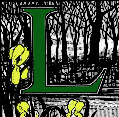[This passage has been excerpted from Dale H. Porter's The Thames Embankment: Environment, Technology, and Society in Victorian London, which is reviewed eleswhere in the Victorian Web —GPL.]
 ondoners' intensive use of coal for hearth fires (they felt the more efficient Continental stove made rooms "close" and cheerless) helped raise
the ambient temperature of the city two to three degrees Fahrenheit above
that of the surrounding countryside, with a corresponding rise in humidity. Gas lights, introduced in the 1830s, produced another four to five degrees difference and added their fumes to the atmosphere. The smoke,
mixed with caustic exhausts from coal gas works and the miasmas emanating from polluted watercourses, caused chronic respiratory ailments
among its less fortunate denizens and blocked out perhaps three-quarters
of the sunshine normally enjoyed by country towns. This "heat island," as
Thomas Glick has called it, severely limited the species of animals, trees,
and flowers (as well as parasites), favoring those which could flourish sym-
biotically with humans. Rats monopolized the city's sewers, and wrens proliferated amid the piles of manure in city streets. Pigeons, of course, adapted well to a regime of garbage and building ledges. Long before Darwin, they selectively bred for dark coloring as camouflage against the soot-covered buildings. [108]
ondoners' intensive use of coal for hearth fires (they felt the more efficient Continental stove made rooms "close" and cheerless) helped raise
the ambient temperature of the city two to three degrees Fahrenheit above
that of the surrounding countryside, with a corresponding rise in humidity. Gas lights, introduced in the 1830s, produced another four to five degrees difference and added their fumes to the atmosphere. The smoke,
mixed with caustic exhausts from coal gas works and the miasmas emanating from polluted watercourses, caused chronic respiratory ailments
among its less fortunate denizens and blocked out perhaps three-quarters
of the sunshine normally enjoyed by country towns. This "heat island," as
Thomas Glick has called it, severely limited the species of animals, trees,
and flowers (as well as parasites), favoring those which could flourish sym-
biotically with humans. Rats monopolized the city's sewers, and wrens proliferated amid the piles of manure in city streets. Pigeons, of course, adapted well to a regime of garbage and building ledges. Long before Darwin, they selectively bred for dark coloring as camouflage against the soot-covered buildings. [108]
References
Porter, Dale H. The Thames Embankment: Environment, Technology, and Society in Victorian London. Akron, Ohio: University of Akron Press, 1998.
Last modified 1999